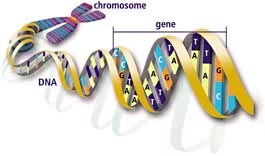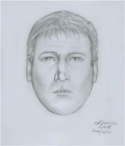whiterhino
Well-Known Member
- Joined
- Jun 13, 2012
- Messages
- 1,390
- Reaction score
- 6,734
Will LE ever specifically say if they pulled fingerprints off the rear-view mirror or other surface of Sonia's car, or from any of the crime scenes? (I know this isn't useful if prints belong to others known to Sonia who would reasonably be expected to have prior prints in her home or car. But I've been watching a LOT of real crime shows lately, and often the perp(s) will leave bloodied prints - that's a likely distinction from expected ones). We don't know what the murder weapon is because LE has never told us; all we know is (sorry for the graphic refs here) that Sonia lost a lot of blood. IF a knife was used, often (as shows like Forensic Files and others indicate), an attacker is likely to cut themselves if the knife becomes slippery. Is this how LE gathered DNA? Is this a reason why LE has talked about "mixed DNA" samples in Sonia's case -- is that because Sonia's and the perp's blood is mixed, or is it a reference to the possibility of two (or more?) perps? What's the update on using the "new technology" to separate mixed DNA samples that LE discussed earlier?
I get the feeling the killer wore gloves/wiped their prints and any traces of themselves. Aside from some DNA left behind which after 10+ years has seemingly resulted in nothing.
Actually, I'm kind of unnerved knowing that whoever did this left almost no trace. If it weren't for the boot print and trace DNA, there would've been nothing!!! (that we know of)
I don't think the DNA came from an injury to the perpetrator. IMO it's likely sweat or saliva which IIRC would be more difficult to extract a full profile from ('m literally basing that off CSI so not scientific at all). Maybe this is one reason why it's taken so long? DNA with some amount of protein (?) like semen or tissue is, I believe, preferable. Still though it would be nice to have some kind of follow up after this many years.
@2soccermom I'm guessing they collected evidence and either returned it to Sonias' family or possibly put it into an auction? Sometimes the "proceeds of crime" are auctioned off but IDK protocol in this type of situation.
Brings up some questions: Where did the perp leave SVs' keys? Did LE find anyone else' DNA or prints/traces in SVs' home? Yes, we can say the BF or mother, brother etc could have left DNA/hair etc behind from previous visits. My question is did they find anyone elses' DNA at all besides Sonia and if so, whose, where and what kind?
I've always wondered if the boot print wasn't like some kind of calling card or intentional "mistake". I've also often wondered whether or not the killer is actually a size 10 work boot or if it wasn't someone wearing a size up/down. It would probably be fairly easy to scrub off the boots with some bleach and dump them where they'll be picked up quickly.
Speaking of DNA... Short story below:
There was this guy when I was younger. He had a reputation for being a creep and a perv. One night I was out having drinks with friends when I noticed the bartender was the creepy guy. I was placing my empty glass on the bar when I spotted him collecting some of the bottles and setting them aside. It stuck me as odd as I watched him take only some of the bottles, not all of them.
He caught me watching him. He looked over at me and said "It's for recycling". I never really believed him. Turns out, several years later he was caught peeping in windows and recording women.
Sometimes when I think of the DNA in Sonias' case, I think of this creep and the bottles. I ALWAYS felt that he was collecting bottles for DNA and prints, not to recycle.
The creep is currently in prison but not indefinitely. His shoe size and DNA are available right now and he is from a rural area VERY close to where Sonia lived, within a sort of triangle. Sometimes I think what if the DNA were planted? What if the boot print was intentional?









